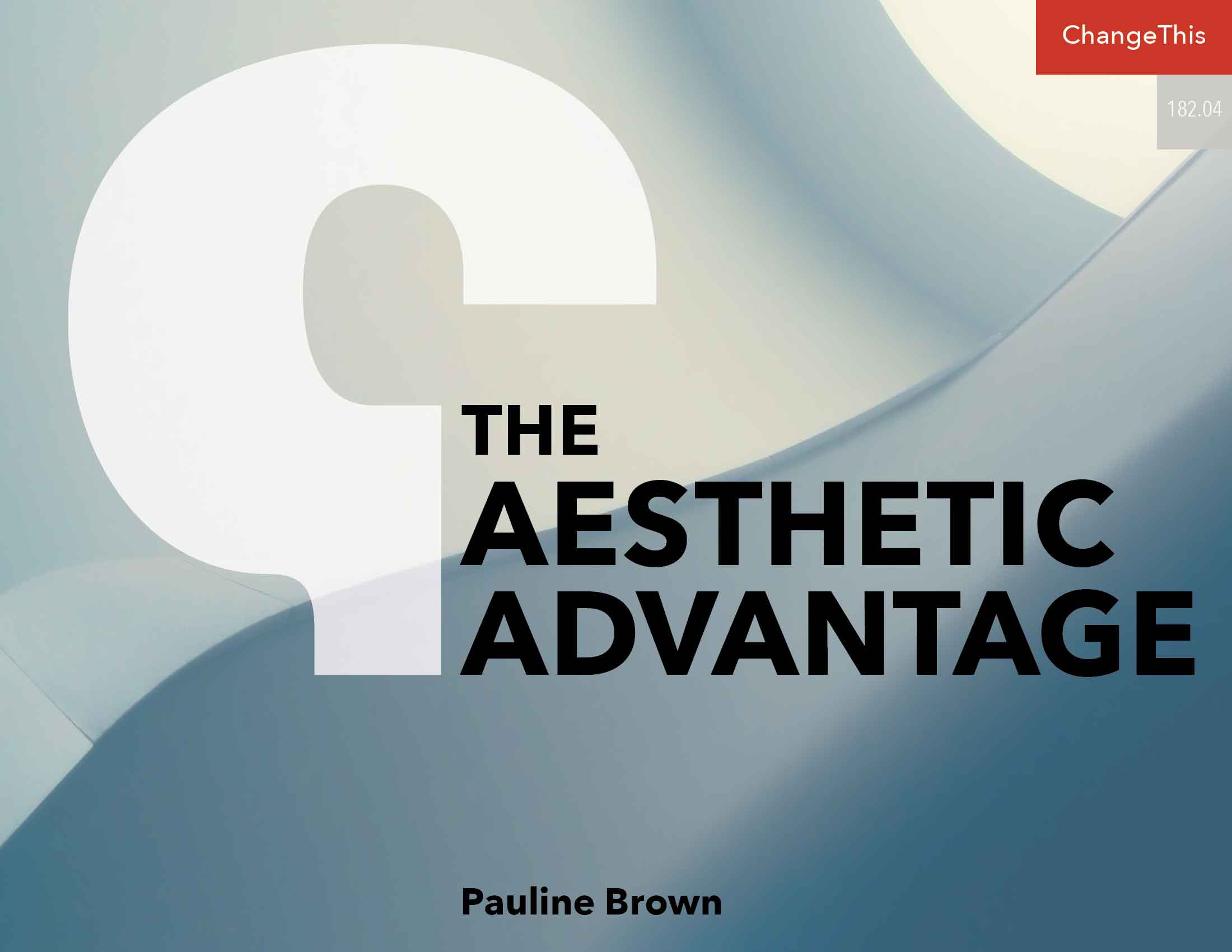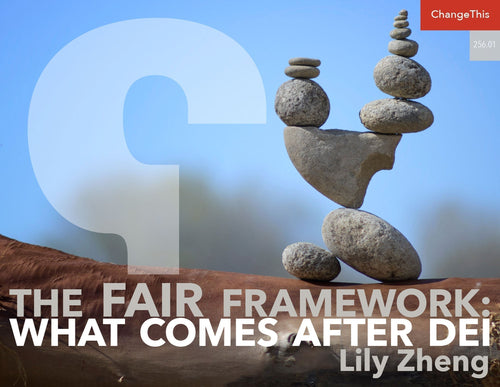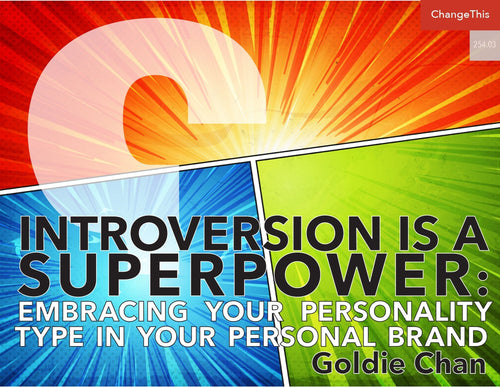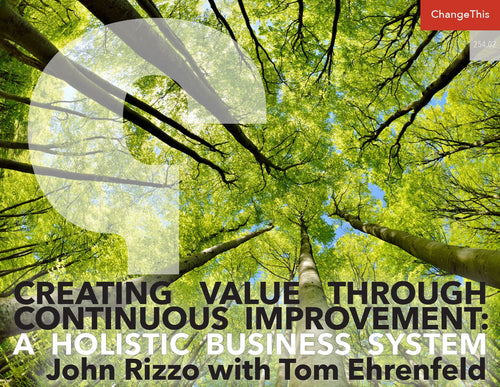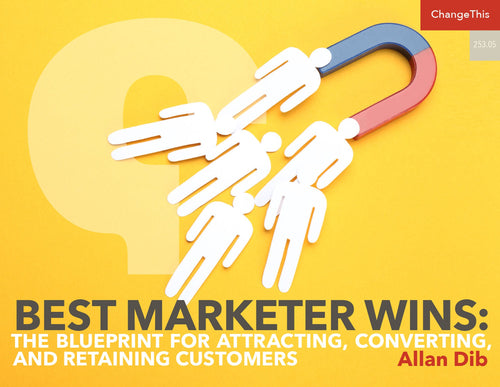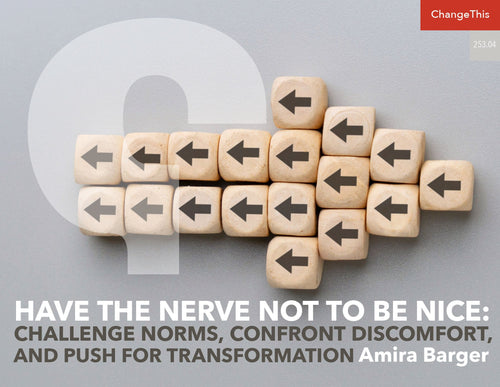The Aesthetic Advantage
In many ways we live in the greatest era in human history.
Across the globe, people have never enjoyed longer life expectancies, nor faced lower threats of war, crime, disease, and violence. Standards of living and wellbeing are higher than ever, and people have easier access to education and information. However, when it comes to building and sustaining businesses, it is arguably one of the most challenging times. Consumers have what seem like infinite choice, unrealistically high expectations, high price sensitivity, low patience or tolerance for any and all forms of dissatisfaction and distrust of corporations and brands. How can businesses continue to grow, innovate, and prosper in such an environment?
With the exception of a few essential goods like food and energy, the vast majority of what businesses sell is utterly non-essential. And people know it. They don’t need more “stuff.” In fact, most people are trying to reduce their “stuff” and, where possible, simplify their lives. That’s one of the reasons that charities like Goodwill report an overwhelming influx of donations, and online thrift stores like ThredUp and The RealReal forecast that the second-hand market will reach $41 billion as soon as 2022.
Having said that, what people still do need—and will continue to crave and seek out— is community; they need and want opportunities to learn and discover; to express their feelings and dreams, and to communicate their ever-evolving identities. They need tools to make the world and themselves more aesthetic. These are the underpinnings of desire, and businesses have an extraordinary opportunity to reach people through these particular human needs.
My new book, Aesthetic Intelligence: How to Boost It and Use It in Business and Beyond, focuses on that last pillar—aesthetics—and how it can be cultivated and applied to business for long-term advantage.
By aesthetics, I am not referring simply to how things look. The word aesthetics derives from the Greek aisthetikos, meaning sentient or an ability to feel things, and extends well beyond visual elegance. Aesthetics is the gratification and pleasure people feel when all their senses are awakened.
Aesthetic businesses offer goods, services, and experiences that stand out, resonate, and delight their customers. Customers, in turn, pay a premium not for the utility of their purchases, but the pleasure of them—how the product or service makes them feel, what memories they evoke.
Aesthetic strategies are not found in business school case studies or books oriented around structured frameworks, analytic tools, and dispassionate views about the marketplace. Rather, they are found in a profound and empathic understanding of customers—not what they buy or where they shop but how they feel and what delights them—and a vision of how their pleasure can be enhanced not as shoppers but as humans.
“Aesthetic businesses offer goods, services, and experiences that stand out, resonate, and delight their customers.”
To lead aesthetic businesses, executives need to be attuned not only to their own aesthetic sensibilities and values but also to those of their customers. Studies show that 85% of people today buy a particular product because of how it makes them feel. However, marketers typically focus their efforts on the remaining 15% of a buying decision: a rational evaluation of features and functionality. Aesthetics is not a frivolous extra that only luxury, design-oriented or trend-driven businesses need—it’s an imperative for all businesses to survive and thrive.
According to Clayton Christensen, a professor of business administration at Harvard Business School and one of the world’s top experts on innovation and growth, when we buy something, we are in effect “hiring” it to help us do a job (whether that’s finding something to make us look sexy for a date or putting something tasty and healthy into our kid’s lunch box). If the product does the job successfully, we will “hire” it again (in other words, buy it again). If it fails, we fire it. We buy things because we want them to help us succeed in our endeavors no matter how mundane or grand. In other words, people, not machines, buy things. People are emotional and make decisions largely based upon how their purchases make them feel. The better they feel, the more engaged and loyal they are toward those products and brands. Christensen says companies miss this (and fail) time and again, because they make product and marketing decisions based on what Christensen sees as false correlations between a buyer’s attributes (status, age, job, gender) and his or her buying decisions.
There are many examples of entrepreneurs who got this right. For example, Hamdi Ulukaya, founded the Chobani brand on the basis of aesthetic delight. As a young Kurdish immigrant in the early 2000s, he enrolled at SUNY Albany, where he invited his father to come visit. His father tasted some of the feta cheese from upstate New York and didn’t think it compared favorably to the tangy, rich feta he had learned to make in his native Turkey. He suggested to Ulukaya and his brother that they could do better. Maybe they could import the good stuff—but that would prove to be expensive and impractical. Why not make it locally instead? Why not apply ‘old country’ techniques to New World technology? In 2002, Ulukaya and his brother started their own cheese company under the brand name Euphrates in Johnstown, New York. Within just a couple of years, the company had become a successful small cheese producer. He brought not only techniques that had been handed down through the generations, but also offered consumers an experience that encompassed not just taste, but visual appeal, and a back story that stirred emotions and provided a sense of place.
Ulakaya wasn’t done yet. He also thought that American yogurt needed help. And it did. Typical store-bought yogurt was thin, watery, and filled with enough sweeteners to make it a good stand-in for pudding. Conventional American yogurt was far from the fresh yogurt he knew from his childhood. It was also quite different from the yogurt produced in the US 30 or 40 years ago, which was sour and creamy and much closer to what Ulakaya thought of as yogurt. American’s taste for sweetness, developed by design, had altered the yogurt market, and Ulakaya wanted to take it back to its roots.
In 2005, during an economic downturn in upstate New York, Kraft closed a factory in South Edmeston, New York, about 60 miles away from Johnstown. The factory, a fully equipped yogurt factory, had been for sale. Closing the factory had been devastating for the town, but the recession also made it possible for Ulakaya to buy the factory and start making yogurt using the local workforce who were already trained in dairy manufacturing.
Once again, Ualkaya used old world techniques to create a product that was notably thicker, creamier, and less sweet. It was more sensuous than anything that was on the American market (save any small batch yogurt you were lucky enough to find at a local farm or farmer’s market). The Greek style yogurt redefined the category yogurt by introducing a new thicker texture, offering a more natural (less sweet) flavoring—and capitalizing on a growing consumer awareness that sugar was the enemy of good health—and featuring images of natural ingredients like pineapple, mango, and cherries on its clean, white container. The brand became one of the most explosive food startups to ever hit the market, netting more than $1 billion in its first five years of operations.
Not only was the product delicious, it gave people a different and pleasurable experience when buying, serving, and eating it.
“Aesthetics is not a frivolous extra that only luxury, design-oriented or trend-driven businesses need—it’s an imperative for all businesses to survive and thrive.”
The French outerwear brand Moncler was founded in 1952 by René Ramillon, and its name comes from its place of origin, Monestier-de-Clermont, an Alpine town near Grenoble. Its initial products included quilted sleeping bags and tents. The company’s first puffy jacket or parka was introduced in 1954, and it was conceived as a way to protect factory workers from the cold. French mountaineer Lionel Terray saw the potential and applied them to a specialized range of products for his expeditions. That same year, the jackets were used by an Italian team on their climb up K2. In 1968, Moncler was used by the French ski team in the Grenoble Winter Olympics. While functionally effective against the elements, the look of these initial parkas was akin to a shapeless sack. By the mid 1990s, the brand had begun to struggle financially, overtaken by other more prominent outerwear lines like Prada on the high-end and North Face on the more moderatelypriced sporty end. The company was sick and needed a cure.
In 2003, the brand was bought by the Italian creative director and entrepreneur, Remo Ruffini, who came from a long and distinguished line of Italian textile makers and businessmen. At the time, the company only had a about $60 million in sales worldwide and was hemorrhaging cash and cache. Under Ruffini’s leadership and curation, the brand grew from a simple and boxy goose down jacket to what the French call “la doudoune chic” (the chic jacket) and Italians, “il piumino di lusso” (luxury duvet). In 2008, private equity firm Carlyle acquired 48 percent of the company, becoming the largest shareholder in the company. As a Managing Director at Carlyle, I joined the board that year (and remained on the board through 2010), with the goal of helping the company expand into North America and other non-European markets.
In 2013, the company went public on the Milan Stock Exchange. Carlyle sold its shares over a period of several years, yielding one of the best returns of by that firm’s European fund. Today, Moncler employs more than 1,000 workers and generates revenue close to $2 billion per year. It’s also the first-ever outerwear brand to garner a unique, powerful and influential fashion authority.
So how did Ruffini use aesthetics to curate or cure the company? He kept the highquality workmanship and detailing. But he modernized the style of the products and incorporated more high fashion and high-tech components. He also expanded into products outside outerwear (e.g., boots, hats, sweaters), while never abandoning his core product, parkas. Unexpected collaborations with renowned designers like Thom Brown, Junya Watanabe, and Giambattista Valli added vitality and a fashion-forward sense to the line. Buzz-worthy fashion shows staged in unexpected sites, (e.g., models posing along scaffolding at Manhattan’s Chelsea Piers, flash mob of models in Grand Central station, ice skaters around Wollman Rink in Central Park) led to extraordinary editorial coverage of the collections and articulated the brand as one that was high quality as well as cutting edge. A rollout of retail stores (today there are more than 200 around the world in prime locations) didn’t happen overnight—they are well-designed spaces customized to their location (ski resorts vs. urban centers).
Regardless of the type or size of business, the value of aesthetic in business starts at the top, with the leader’s own Aesthetic intelligence, or what I call “the other A.I.” It starts with the ability and willingness of leaders to bring as much of their own values, personalities, styles and even quirks into the equation. They need to be clear and transparent as to why and how they personally choose to buy things? What feelings do they want to experience through their purchases? How do the things they buy ultimately achieve (or fail to achieve) that sensation? Their personal experiences matter; after all, they are customers too. And they are experts on themselves.
So how can you apply aesthetics to your business to help customers make easier and better decisions as well delight them in the decision-making process? By curating your product or service in a way that puts the customer at the forefront—and this takes empathy.
The first step in curation is to get rid of extraneous inputs. When Proctor & Gamble reduced its Head & Shoulders brand offerings from 26 to 15, sales rose by 10 percent. When the Golden Cat Company eliminated 10 of its worst performing cat litters, profits increased by 97 percent, due to both a lowering of production cost and an increase in profits. The ninth largest retailer in the world, Aldi, has learned this and offers just 1400 choices, compared to 45,000 choices in a typical grocery store, and 100,000 choices at Walmart. Get rid of redundant choices or those with no discernable, beneficial features. What are you offering, and in how many versions? What are the differences between them? If you can’t tell products apart, neither can your customer.
“Regardless of the type or size of business, the value of aesthetic in business starts at the top, with the leader’s own Aesthetic intelligence, or what I call
‘the other A.I.’”
Second, help customers imagine the emotional effects of their choices before they are made. For instance, a housekeeping service may be more appealing and successful if it can suggest or communicate sparkling cleanliness through imagery on marketing materials and in the appearance of the housekeepers themselves.
The third way of increasing engagement and helping the customer complete the choice (i.e., make the purchase) is categorizing items clearly and meaningfully in retail or other settings where choices are made. It turns out we can handle more choices if they are categorized properly—but the categories must mean something to customers and there cannot be too many. When Wegman’s grocery store categorized its 100s of magazine offerings into fewer categories (i.e., “men’s,” “women’s,” “tech,” “food,” “sports,” “design,” it sold more titles than when it divided magazines into 20 or 30 categories). Moreover, the categories can’t just be structured by clusters of information or product features, but by human emotions. For example, in the fragrance sector, customers do not respond to categories based on logical divisions (e.g., pricing, chemical ingredients, or country of origin); they respond to the moods and images that each fragrance project (e.g., romantic, sexy, or clean).
If you bombard customers with a slew of choices all at once, they tend to feel overwhelmed and are more likely to walk away from the transaction altogether. The latter approach shows a lack of empathy for the decision-maker—your customer—and is also a symptom of not having thought through the aesthetics of your product or service in an integrative fashion—from product development to package design to promotions to retail distribution and fulfillment.
Like most skills, we need to practice curation before we are truly successful at it—and we probably won’t get there without hands-on practice. We can learn a great deal about curation and telling a powerful aesthetic story through the process of interior design, or how we put together a space based on personal preferences and needs. Even those people putting together retirement plan options for employees can benefit from this learning because thinking about how things go together and how they are perceived as a whole will make financial designs better, more useful, and will result in better outcomes. Good aesthetics will nudge people toward better decision making. (Nudge is a behavioral and political science theory that says there are indirect ways you can help people make good decisions—or decisions that you want them to make.)
“An appreciation of style and aesthetics isn’t innate; it’s something that must be developed and refined over time.”
The good news is that AI can be learned. An appreciation of style and aesthetics isn’t innate; it’s something that must be developed and refined over time. It also entails understanding how and why the senses trigger certain emotions—especially pleasurable ones—through stimuli.
As I look critically at the broader marketplace, I believe that business leaders have gone too far in depersonalizing their connections to the people who work with them and buy from them. In so doing, their businesses have lost their raison d’être. Whether or not these businesses still meet their customers’ functional needs, they certainly do not give them much pleasure.
To survive, they ought to go back to where they started—not as business people, but as humans. They need to re-instill a human touch into their propositions. I am not suggesting that businesspeople disregard economic principals, Big Data, or analytic thinking. But we shouldn’t depend on these things as the only indicators of future growth. In the long term, we cannot win on those elements alone. Moreover, extracting financial value from a business should never be done at the expense of building aesthetic value.
The ability to create beauty, arouse the senses, lift the human spirit, and forge connections—that’s where people and businesses ultimately win. In the end, a strategic application of aesthetics may be the best solution, if not the only one.

